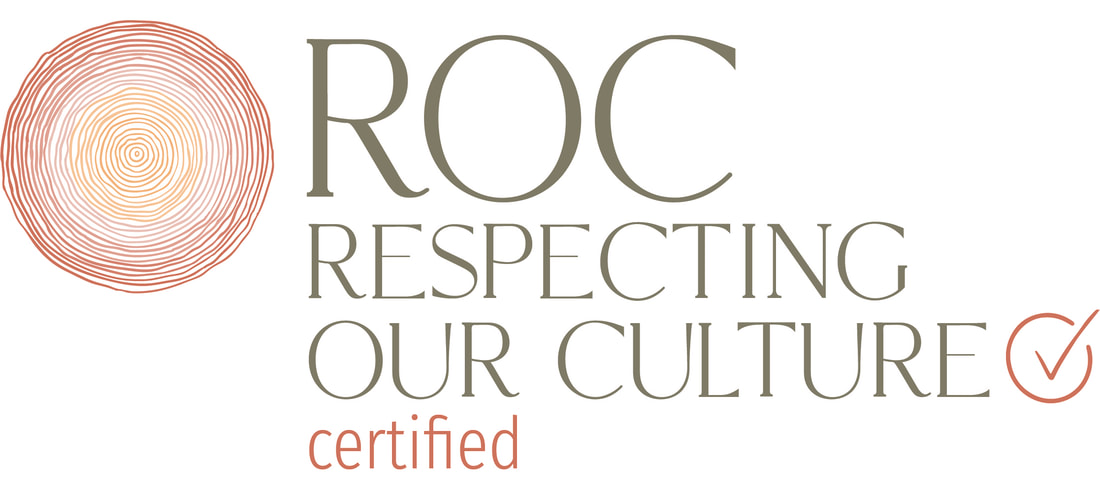|
Stradbroke Island History (Minjerribah)
Strolling along Cylinder Beach at Point Lookout in the year 2020, it is difficult to imagine how this beach must have looked to Matthew Flinders in 1803 when he came ashore in search of fresh water. Today, the beach is scattered with colourful towels, sunshades and laughing children dodging the waves. The crystal clear water is the same, the wide sweep of sand backing onto the bush is no doubt similar, but when Flinders stepped on to terra firma there was no hillside dotted with houses, no roads, nothing but an unspoiled paradise. Flinders and his crew were befriended by the local indigenous people and were shown where to find water. This encounter was to be the first contact between the local people and the white explorers. Flinders returned to his vessel bound for Sydney grateful for their assistance. Lieutenant James Cook had already sailed by in 1770, charting the outer reaches of Moreton Bay and naming several prominent features of the Island, including Point Lookout by way of warning fellow explorers to be aware of the rocky outcrop. Some twenty years later in 1823, three timber getters, Pamphlett, Finnegan and Parsons were shipwrecked on Moreton Island and spent eight months exploring around Moreton Bay. Upon their arrival at Pulan (Amity Point) the trio was welcomed by the Noonucals who fed, housed and shared knowledge with them. The Noonucals showed the three men how to make a canoe from the local timber and it was in this vessel that they departed six weeks later. The following year Surveyor General John Oxley arrived at Pulan and named it Cypress Point whilst on an exploratory mission with fellow surveyor Robert Hoddle and botanist Allan Cunningham in search of a suitable site for a penal colony. It is now known as Amity Point named after Oxley’s ship. In 1825 Amity Point was set up as Moreton Bay’s first Pilot Station, and upon Oxley’s strong recommendation, Minjerribah was destined to become a penal settlement. This marked the beginning of permanent contact between Europeans and the Aborigines in the Redlands. In June 1827, Minjerribah was renamed Stradbroke Island by Governor Darling in reverence of the Honourable Captain J.H. Rous, son of the Earl of Stradbroke and also Viscount Dunwich. Rous was the Captain of the HMS Rainbow, which was the first ship of war to enter Moreton Bay. Governor Darling also named Dunwich, Rainbow Reach and the Rous Channel in their honour. Commandant Patrick Logan selected Dunwich as a possible site for a settlement in Moreton Bay, and following his advice he set up a small colony as a loading and unloading depot. He arranged for convicts to construct a waterfront causeway which is still used today by Stradbroke Ferries. Over the following years, tensions erupted between the convicts, local Aborigines and the Europeans. One of the first known conflicts erupted in 1828 when a cotton plantation was established at Myora, near Dunwich – the site was a favoured Aboriginal campsite and tempers flared. The site was inexplicably abandoned within six months. Between 1831 and 1832 there were more than ten violent clashes between the Europeans and the Minjerribah people resulting in deaths on both sides. Not all relations were soured however and when the “Sovereign” sank in the South Passage in 1847, considerable recognition was granted to the Minjerribah people and the Ngugi people of Moreton Island for their valiant efforts to rescue the stricken crew. They were rewarded with a boat and breastplates in gratitude for their assistance. It was in this year that all the Ngugi people moved to Minjerribah, leaving Moreton Island permanently. From 1850 onwards fishing became a major industry. No more convicts had been sent to Moreton Bay for some time and the Island had been opened up to free settlers. Houses were constructed and the men set their sights on supplying the Redlands area with fish and their byproducts. They utilized the Noonucals local knowledge and techniques as much as possible in their pursuit of the capture of dugongs for oil and the establishment of oyster banks. However, they did not heed the local’s warnings and due to bad management and greed, the area was fished out and the dugong oil industry was close to collapse. On July 16 1850, Dunwich was proclaimed to be Moreton Bay’s Quarantine Station. Only a few weeks later a ship called the “Emigrant” pulled into port with Typhus on board. All of her passengers were put into quarantine at Dunwich. Fifty six of them died and many are buried in the Dunwich cemetery. The quarantine station closed in 1864 and Peel Island was declared as Moreton Bay’s official quarantine station, and Dunwich was nominated to accommodate the Benevolent Asylum which was completed in 1867. The township continued to prosper in the ensuing years, farming was established and dugong fishing had resumed. Employment was available in the asylum for women as nurses and aides, and the men found work fishing or farming. Amity Point also prospered throughout this time. Small schools were set up and the population of the Island grew. In 1892 well known historian Thomas Welsby set up a dugong boiling down plant near Myora to extract the dugong oil used in lamps, for cooking, and in medicine. Prior to 1894 North and South Stradbroke were one and the same island. The two islands were separated after a barque; the "Cambus Wallace" was shipwrecked in a narrow passage off the island that was carrying explosives that had to be detonated in the passage. It is believed that the recovery of cargo from the Cambus Wallace, the detonations, and a severe storm caused the separation of the island creating North and South Stradbroke as we know it today. Murder came calling in September of 1896, at the hands of Matron Marie Christensen at the Myora Mission. She was charged with murder, later reduced to manslaughter for killing five year old Cassy whom she beat to death for swimming with the boys. By 1901 oyster farming was well established on the Island, but a plague of mud worm wreaked havoc on this enterprise. Oyster farming had been the biggest seafood industry in Queensland at that time, employing many Aboriginal and European workers for years. The outbreak of mud worm was devastating but not terminal, and through perseverance the industry survived and still prospers in Moreton Bay. 1902 saw the sinking of the “Prosperity” off Point Lookout, it is believed that a skeleton revealed on the beach in 1956 with a boot still intact on the foot, was the remains of the cook from the “Prosperity”. The discovery of these remains was the origin of the name given to the beach on which they were found – Deadman’s Beach at Point Lookout. Tourism came to the Island much later, when in the 1930’s, Bert Clayton bought land above the South Gorge to build a guesthouse. His first guests were accommodated in tents which he gradually replaced with one room cabins, the next owners of the property renamed it Samarinda. Samarinda still exists in a very modern form on the original site today. Bert Clayton also started the first bus service to Point Lookout and Hayles Cruises began a regular service to Amity and later Dunwich bringing visitors from the mainland. The Point Lookout Lighthouse was constructed in 1932 and the materials used in its construction were deposited on one of the beaches including the cylinders used for assembling the light. The beach was named Cylinder Beach for this reason. In spite of the new lighthouse, the “Rufus King” ran aground in the South Passage Bar in 1942. It was a supply ship loaded with cargo from Los Angeles bringing supplies to Brisbane and field hospitals. The Islanders benefited greatly from the flotsam in the Bay including tins of coffee, barrels of fuel, bags of cotton sheets and even turkeys brought onboard to feed the American crew for Thanksgiving. By this time World War Two was affecting all Australians and the people of the Island. Armed servicemen were stationed there, radio tents were set up, and a radio direction finder and radar were erected at Point Lookout. On the 14th of May 1943, the Australian Hospital Ship “Centaur” was torpedoed off the Island and 268 of its passengers were killed, leaving only 64 survivors. It was during this time that the first mention of a bridge being constructed between the mainland and North Stradbroke Island was discussed. This issue has arisen many times since and has faced fierce opposition each time. The first vehicular ferry service commenced in 1947 with the “Amazon” soon renamed the “Karboora”. That same year the Surf Lifesavers began patrolling Point Lookout’s beaches. The following year saw the Point Lookout Club being affiliated with Queensland Surf Lifesaving and a permanent club house was erected on the Main beach Headland where it remains today. Sand mining was first established on the Island in 1949 when Zinc Corp set up their operation. In the early stages sand was dug up by hand from Main Beach and sent by truck to Dunwich, this hands-on approach solved the unemployment problem on the Island giving jobs to many local residents. Some five years later Titanium and Zirconium Industries set up a more elaborate operation building a dredge on Main Beach and utilizing a trans-island ropeway to transport the sand overland to Dunwich. Sand mining is still the number one employer on the Island with Consolidated Rutile Ltd, established on the Island in 1963 still in operation today. Stradbroke Ferries began a regular service to the Island in 1964 and over the years, the Island has seen many changes in its population, industry and construction. A detailed timeline of the history of North Stradbroke Island can be found at www.redland.gov.au. In the early 1700 to 1800’s, the area of Moreton Bay encompassed many islands. These islands were known collectively as Quandamooka – or Islands in the Bay. There is abundant archaeological evidence to support that the area has been populated for more than 21,000 years, and they have dated a Midden at Point Lookout as being 25,000 years old and another at Polka Point at 4,000 years. Over centuries travel routes were carved out on the islands and safe passages found on the Bay by the indigenous people, and these well used courses have evolved over time into some of the main roads and channels still in use today. The people of the Quandamooka were separated into tribes in their various locations, the most predominant of these being the Noonuccal and Goenpul of Minjerribah (North Stradbroke Island) and the Ngugi tribe from Moreton Island. The people of Minjerribah relied on the bounty of the sea for much of their food supply and supplemented this with bush tucker and animals from the land like kangaroo, wallaby, possum, bandicoot and echidna. Food The women of each tribe collected vegetables and small game whilst the men went out to hunt for marsupials and water fowls and fished for dugong and turtle. Various plants were treated by the women for medicine and general consumption. They pounded the root of the Bungwal Fern into flour used in making bread and used Bunya nuts as a flour to make Johnny Cakes. The women collected honey, midyim berries and Xyleutes moth larvae (witchetty grubs) along with oysters, eugarie, mussels and crabs from the rock pools and along the shore. It is part of the Noonuccal legend that the men had a special relationship with the dolphins of Minjerribah. The men would call to the dolphins by slapping on the water and digging in the sand with their spears. The dolphins would heed the call and herd shoals of fish in towards the shore where the men caught them with towrow nets. Once the men had taken enough fish for the tribe, any remaining fish would be fed back to the dolphins. This bond between the Noonuccal men and the dolphins is recorded in their art and is well known throughout the islands. The people had a plentiful supply of fresh water and an abundance of food on which to exist, they were keen hunters on both land and sea. They were adept at making seafaring canoes from tree trunks and travelled to the mainland regularly to hunt for flying fox. Fishing, hunting and gathering was part of the communal economy in which everyone was involved according to their capacity. Culture All of the people inhabiting Moreton Bay understood the vital relationship between themselves and their environment. They lived a nomadic life, travelling between semi-permanent campsites. As a result they proved remarkable at responsible land, sea and resource management. They have a deep understanding of their unique environment and all aspects of this are evident in integrating the surroundings into sacred sites, dreaming tracks, song lines and the spiritual significance of the natural features of the Islands. They are a people bound by tradition and these traditions are kept alive today in the form of artwork, legends, song and dance and an ongoing respect for the natural surroundings. Corroborees and other ceremonies were an important part of daily life and huge regional gatherings would have had enormous ceremonial, spiritual and cultural significance for all of the tribes of the region. *Thank you to Aunty Margaret Iselin of the Minjerribah Moorgumpin Elders for providing us with valuable research information and confirmation of facts for this document. North Stradbroke Island |
For all Enquiries
|
Straddie Kingfisher Tours Copyright 2023



